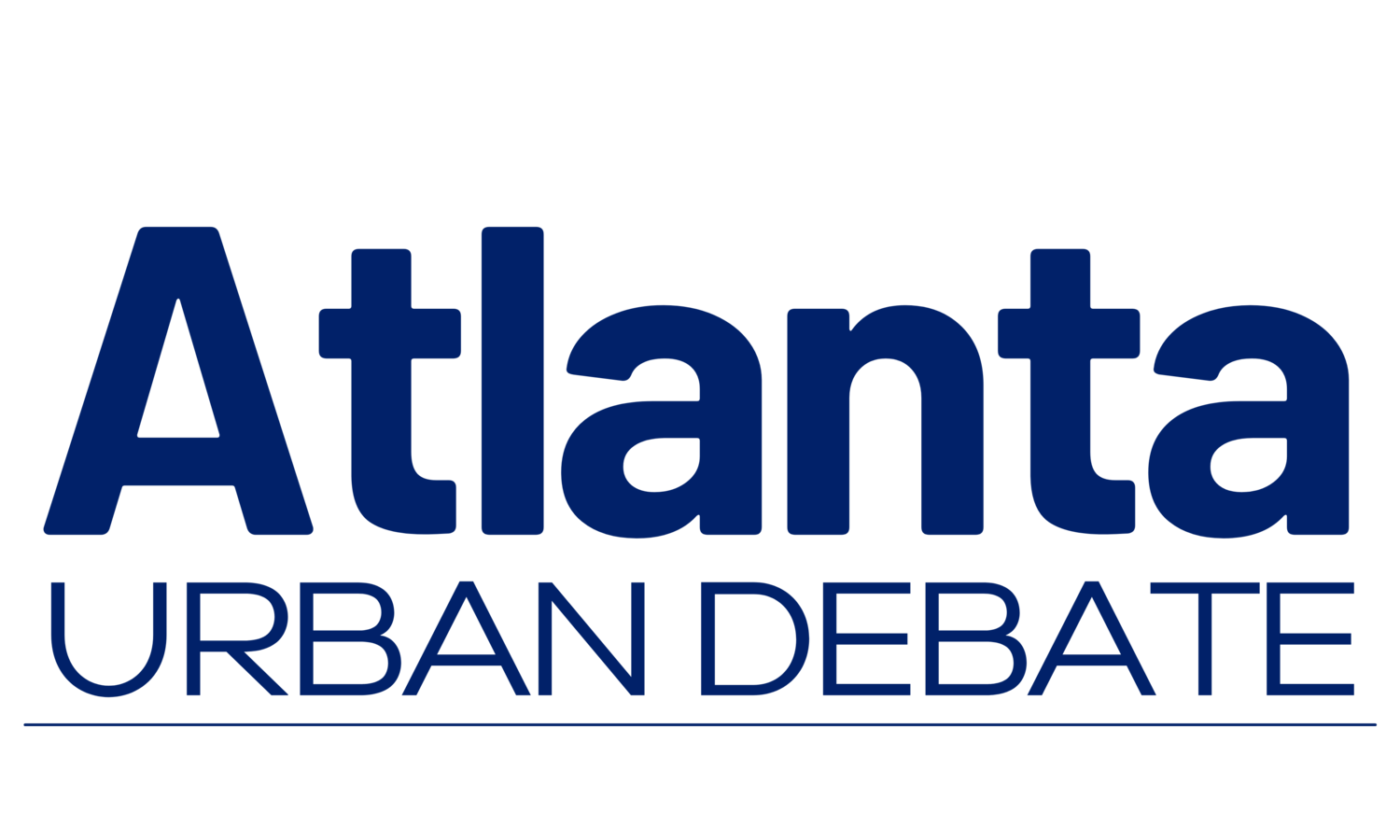The Atlanta Urban Debate League is committed to providing excellent debate education programs, services, and opportunities to diverse students, educators, and members of the community!
Kritiks: Endless Examination
Learning Objectives
Familiarize students with the philosophical and sociological nature of kritiks.
Facilitate interrogation of the reasoning and motivations behind affirmative cases.
Time Needed
~15-25 min.
Resources & Materials
Evidence/Resource packets (1AC only, one per person)
Teacher Preparation
Write a summary of the 1AC on the board, highlighting the following:
What the affirmative thinks the problem is.
What the affirmative has identified as the solution to the problem.
How the affirmative explains that their plan solves the problem.
Lesson Outline
- Explain to students that the goal is to find holes in the 1AC based on how the harms were identified as a problem and the plan was identified as a solution.
- Clarify that this activity is primarily a guided discussion.
- (Optional) Review the 1AC to ensure all students understand the plan and advantage(s).
- Use the following guided questions, giving students a minute to reflect after each question before discussing.
- Ask students if they think the 1AC’s harms are realistically presented.
- If yes, follow up by asking if the problem actually ends where the affirmative has identified or is one sign of a larger problem.
- Ask students if they think the affirmative plan is a (long-term) solution to any of these larger problems.
- If yes, follow up by asking if the problem actually ends where the affirmative has identified or is one sign of a larger problem.
- Ask students if they think the plan overlooks any specific groups of people affected by or affecting the problem.
- Ex. Does the plan solve for some common cause of the impact but ignore other causes that primarily affect certain regions, ethnic or religious groups, economic classes, etc.?
- Ask students if the plan will stop the root cause of the harms or temporarily addresses the impact without preventing it from happening again.
- Ask students if the 1AC presents any specific actors (ex. The USFG, corporations, any specific countries, etc.) as automatically legitimate and well-intentioned or untrustworthy and morally bad/dubious.
- Ask students to come up with explanations for why the 1AC has used these portrayals.
- What does the 1AC evidence say versus what is unsaid/assumed?
- Ask students to come up with explanations for why the 1AC has used these portrayals.
- Ask students if they think the 1AC’s harms are realistically presented.
Points of Improvement
Students completely agree with the 1AC.
Student explanations rely on certain organizations or ideas being right or wrong but are unable to articulate why.
Signs of Mastery
Students identify underlying contributors to harms not mentioned in the 1AC.
Instructor Notes
The instructor’s role in this activity is to facilitate discussion, not lecture.
Encourage students to elaborate on any brief answers.
This activity is a way to introduce the style of thinking employed by kritiks without needing to know structure or terminology.
